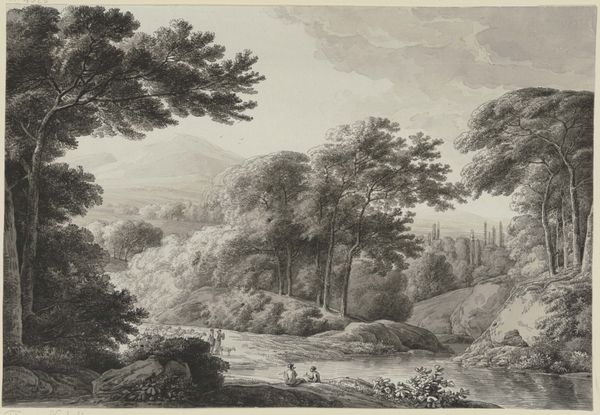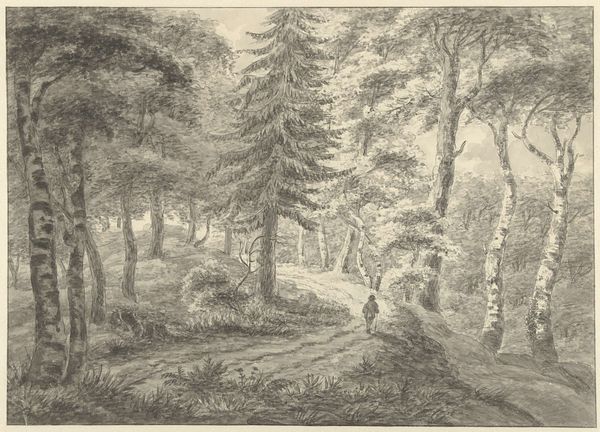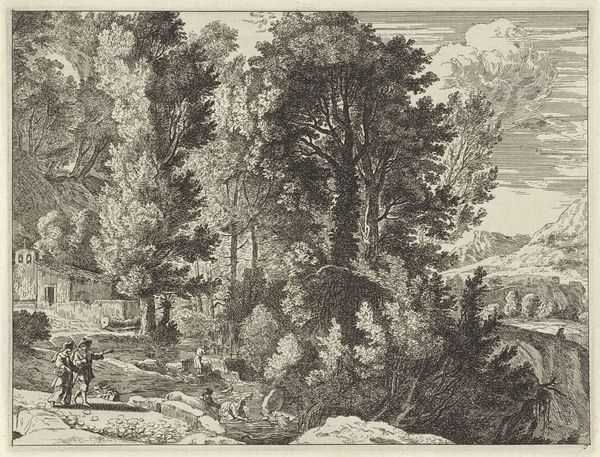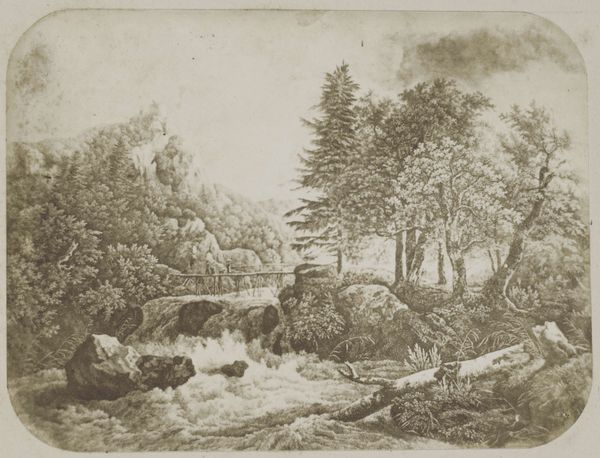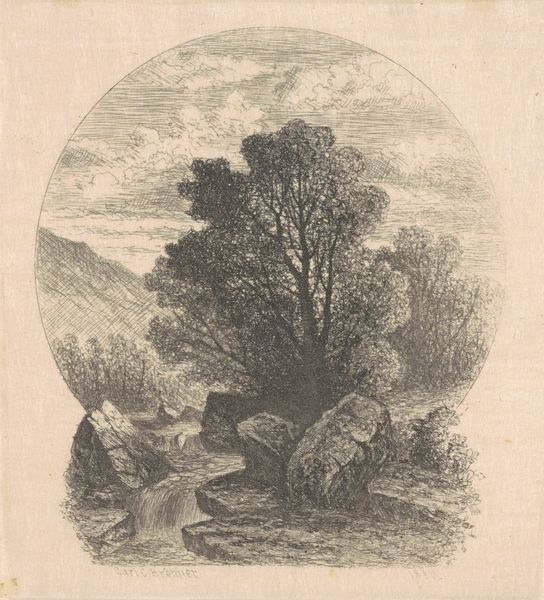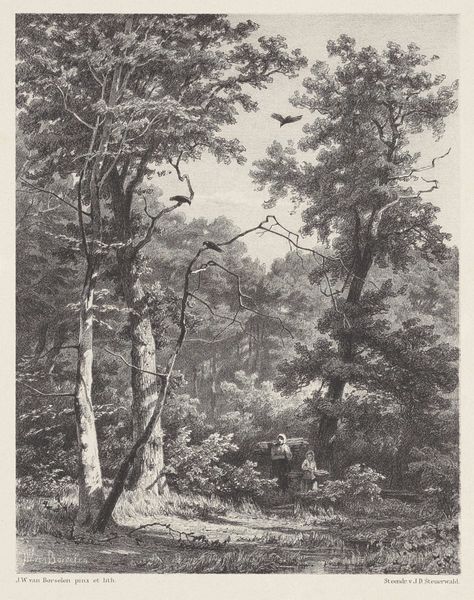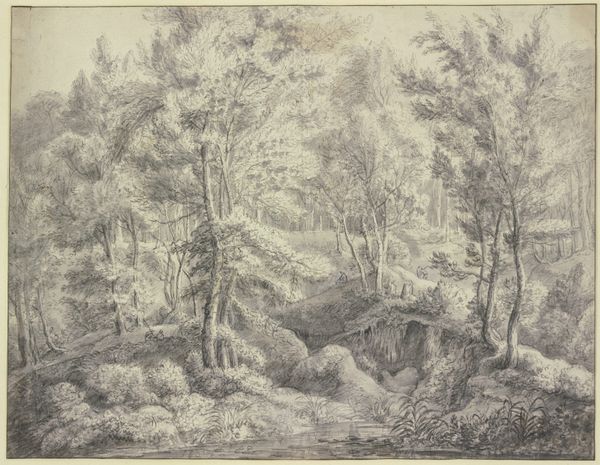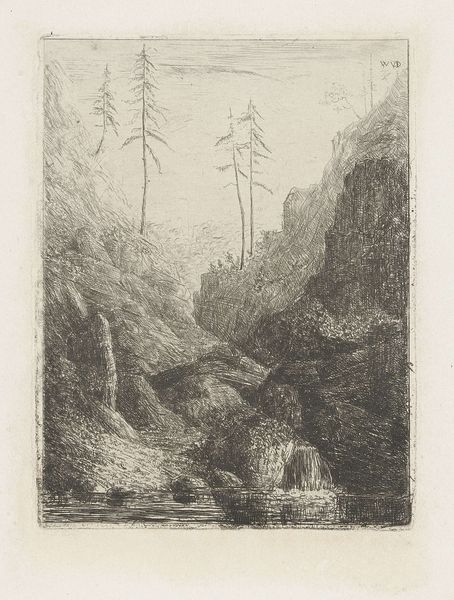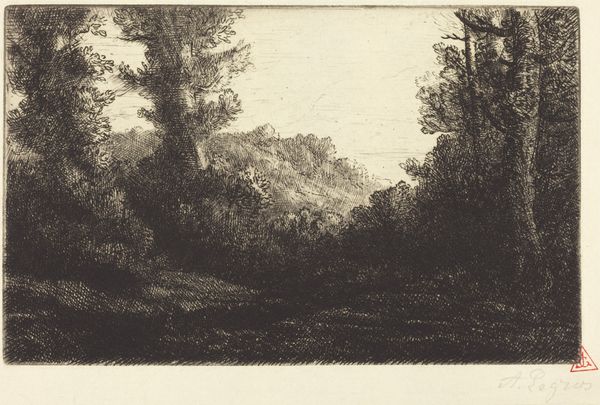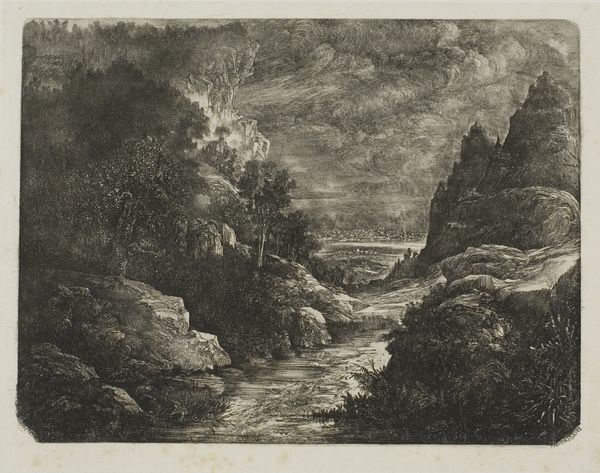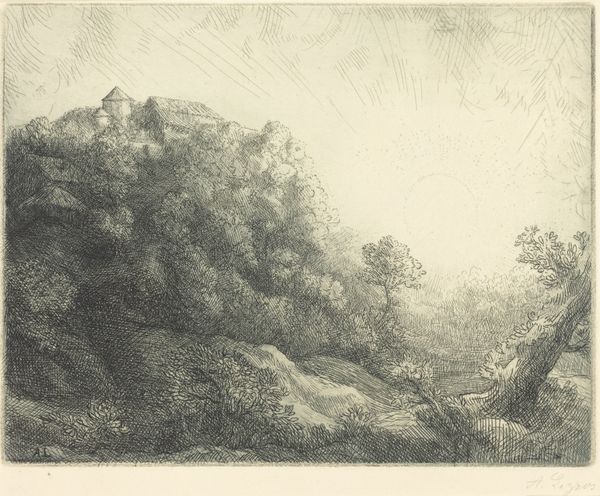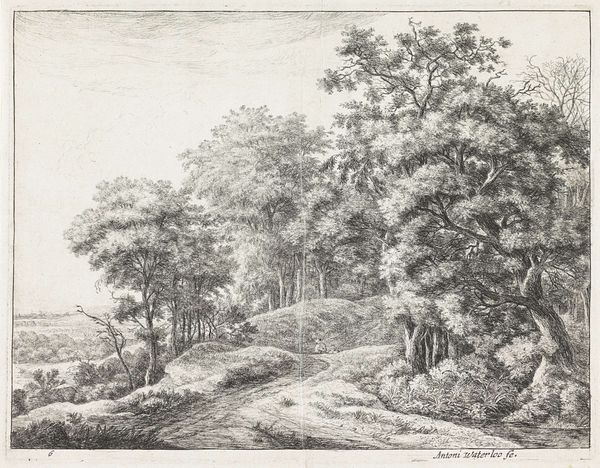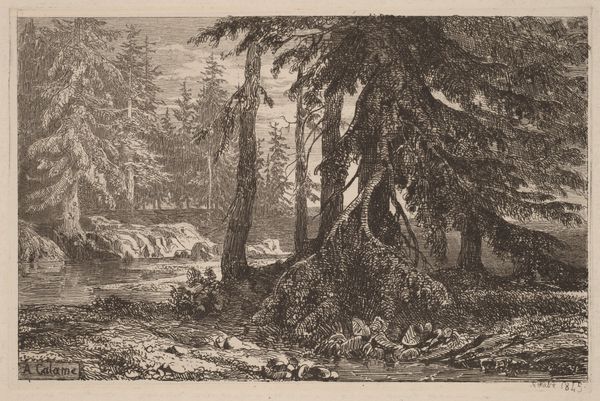
drawing, print, etching, paper
#
drawing
# print
#
etching
#
landscape
#
paper
#
france
#
realism
Dimensions: 118 × 148 mm (image); 135 × 164 mm (chine); 139 × 170 mm (plate); 450 × 315 mm (sheet)
Copyright: Public Domain
Editor: This is Rodolphe Bresdin's "Rocky Landscape" from 1880, a drawing and etching print on paper. The density of detail is just incredible; it almost feels claustrophobic. What symbols or underlying narratives do you see woven into this intricate scene? Curator: Bresdin’s landscapes are indeed intensely detailed, reflecting his inner world. Have you noticed how the density shifts, creating areas of light and shadow? These are not merely representational; they evoke a sense of psychological drama. Editor: Psychological drama? I see the contrast, but can you elaborate? Curator: The rocky crags, the dense thickets, and the towering trees, each element is laden with symbolism. The rocks themselves might represent resilience, perhaps even spiritual obstacles, while the vegetation signifies the untamed forces of nature. Notice how the single, dominating tree almost pierces the skyline. It represents aspiration, striving, or perhaps even a longing for something beyond our grasp. Editor: So it's less about just a place, and more about the artist’s state of mind, projected onto the natural world? Curator: Precisely. Think of landscape painting as a coded language. The artist is imbuing the natural world with layers of meaning, influenced by personal experience, cultural memory, and shared symbolism. Does this give you new thoughts on how we read the etching today? Editor: Definitely. It shifts my perspective from simply appreciating the technical skill to considering what Bresdin was trying to express about human aspiration within a potentially overwhelming environment. Curator: Indeed. It’s a powerful reminder that even seemingly objective landscapes can be deeply personal and symbolic journeys.
Comments
No comments
Be the first to comment and join the conversation on the ultimate creative platform.

